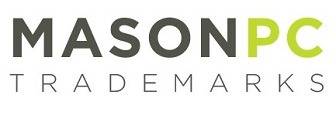To remain competitive in times of crisis or uncertainty, it’s crucial for most businesses to cut unnecessary expenses in order to survive. One very satisfying way to cut costs without much effort is to stop copycats from stealing your profits.
When you read or hear about copycats, you might think of foreign businesses selling counterfeit products or non-existent services, a widespread practice that is very damaging to brands.
The most common type of copycat, however, is the one prowling in your backyard.
It’s probably someone in your extended network.
They’ve admired your business from afar, or even from up close. It might be a partner, a supplier, an employee, or a customer.
- They’ve done their homework on your business.
- They know what makes you successful.
- And they want a piece of the action.
But instead of coming up with their own ideas, they take pieces of yours.
A similar name, a similar product look, a similar website, or graphics on social, or maybe content they’ve copied word for word.
It’s death by a thousand cuts, and it affects your bottom line.
Here’s how:
Lost customers. Whether its new customers being diverted elsewhere, or your existing customers looking to try something similar that is slightly cheaper, your company will start losing sales to copycats.
Increased marketing costs. When copycats enter the marketplace, you might have to work that much harder and pay that much more for visibility. Your followers might start to stray. Your content may not convert as well. Keywords and clicks could start costing you more. All this drives up your marketing and operational costs.
Confusion. Consumers might not be able to tell your company apart from the copycat. Your brand’s value lessens and, eventually, is not suitable for (or worth) protection.
This is the death knell of your brand.
All your ingenuity, creativity, investment, and hard work. Down. The. Drain.
But there’s hope. A way to plug that leaky bucket and stop copycats from draining away your profits.
I can’t tell you how many times I’ve been floored by the statement: “people are going to copy me, and there’s nothing much that I can do about it.”
Um. No. Incorrect. You’re not at the mercy of copycats.
There’s a lot you can and should be doing to prevent and stop the damage caused by copycats. Regardless of the size of your business (and your bank account).
The best offense in this situation is a strong defence.
Here are two low-cost steps you can take to defend your brand from copycats:
- Registration
The first step is to register your intellectual properties, and, register your trademark rights in your name, logo, and taglines. If you have unique product or service names, you should register the trademark rights in those too. A trademark registration does not have to be difficult or expensive!
You should also register your copyrights (right to copy) in any important and unique visuals, such as artwork and packaging designs, as well as any original texts, such as manuals, instructions, and e-books. Your website’s footer should also contain the following copyright notice: © Year, Author/Owner Name.
There are so many legal benefits to having trademark and copyright registrations for these properties!
Registrations deter infringement, but more importantly, they are your primary tools to get infringing trademarks or content quickly taken offline.
A trademark registration is proof that you own the registered property, and all the online social and sales platforms accept this proof of ownership in their complaint procedures.
- Monitoring
The second step in building a strong defense against copycats is setting up a brand monitoring program. You can’t wait around for infringements of your trademarks or copyrights to come to your notice. This head-in-the-sand approach to brand protection usually ends up causing damage to your brand that costs you much more to stop and correct down the line.
Be diligent and proactive. Monitor your brand.
A brand monitoring program consists of a scheduled monthly or quarterly search (I wouldn’t recommend longer than that) of the trademarks register as well as all online and social media mentions for references to your brand (and close variations).
It should also include an analysis of the source of each identified reference, and an assessment of its potential impact on your brand – in terms of causing confusion or damaging your reputation.
If you don’t have the time to devote this level of diligence to monitoring your brand yourself, you can pay a professional to provide monitoring and risk assessment. Brand monitoring services are usually provided under a subscription model, and for a low monthly fee you can have peace of mind knowing someone else is watching over your brand – and will alert you if they find any unauthorized references that could be damaging.
Once you have a strong defense set up, taking action to stop the copycats becomes so much easier. Your trademark and copyright registrations are powerful tools that can be used to quickly ensure infringing content is taken down from any online social or sales platform. These registrations are a compelling part of any cease and desist letter or statement of claim if you need to escalate your action. Regular monitoring ensures you can take quick action if you find any infringing content and safeguard your business from hefty enforcement costs.
By taking action to protect your brand online, you’ll be able to stop copycats from stealing your hard-earned profits – and protect your bottom line.
If you have any questions about how to stop copycats from draining your profits, or if you’re just feeling overwhelmed and need some guidance, please do reach out. I’m here to help.


